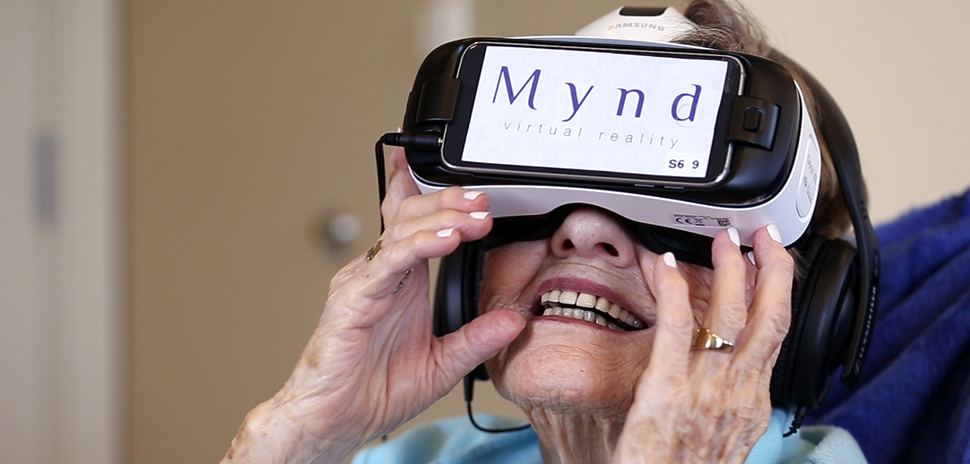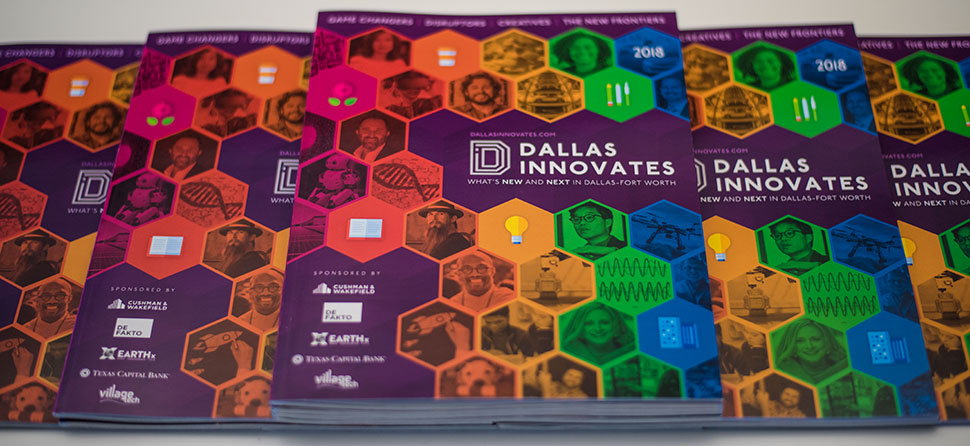When an old high school football injury started nagging, Ted Price created an ointment to rub on his aching Achilles tendon.
Using natural ingredients found in wintergreen plants and grape leaves, the concoction eased his chronic pain in a new way, essentially re-setting nerves to the state they were in before the injury. (Chronic pain results from nerves being oversensitive after the body has sustained damage).
Price, who now runs the undergraduate neuroscience program at the University of Texas at Dallas, is commercializing his pain cream through his Plano company, Ted’s Brain Science Products.
“ … we’re active through the company in trying to develop new lines of products for pain based on the same strategy that we used for our first product.”
Ted Price
And he’s making breakthroughs that could lead to new drugs. In August, he co-authored a study revealing a previously unknown series of connected nerves that pain signals travel through. Researchers are still learning details of this “pathway” they discovered.
“But we’re active through the company in trying to develop new lines of products for pain based on the same strategy that we used for our first product,” he said.
Price’s venture is just one example of how Dallas-Fort Worth universities are commercializing research into products and services that help solve real-world problems.

Alex Lippert demonstrates the 3D light structure. [Photo via SMU video]
UNPRECEDENTED FINDINGS
For decades, Alex Lippert dreamed of creating a hologram akin to the one in the first Star Wars film, where R2-D2 shows a light image of Princess Leia. At 35, Lippert had a “eureka” moment to use molecules that switch from colorless to fluorescent when ultraviolet light hits them.
Lippert, an assistant chemistry professor at Southern Methodist University, in July announced that he had done the hologram one better by building projection technology that creates a three-dimensional display viewable from any direction.
“It doesn’t require moving parts. It uses low-power light sources, which are safer than other displays that employ intense lasers. And, we were able to fabricate the first-generation prototype for under $5,000,” he said.
Armed with a patent for his light-pad system, Lippert is seeking the right investment and management team to bring his idea to market.
Aside from commercializing discoveries through for-profit businesses, universities like the University of North Texas are helping government agencies better protect military personnel.
“The fundamental understanding we achieve will have broader impacts in the long run where other industrial segments will also benefit from the research findings.”
Rajiv Mishra
UNT researchers led by Rajiv Mishra in March announced a project with the U.S. Army Research Laboratory to understand why some advanced materials fail when used as armor for soldiers and vehicles.
Using about $6 million of a $20 million Army grant and working with three other universities, Mishra’s team at UNT’s Advanced Materials and Manufacturing Processes Institute will develop metallic alloys and ceramic composites that weigh less and better prevent harm from projectiles such as bullets.
“The fundamental understanding we achieve will have broader impacts in the long run where other industrial segments will also benefit from the research findings,” said Mishra, University Distinguished Research Professor at UNT.
Meanwhile, a Fort Worth nonprofit unveiled partnerships that provide research opportunities in botany to students at Texas Christian University and the University of Texas at Arlington. Tarleton State University inked a similar deal last year. The agreements with the Botanical Research Institute of Texas, or BRIT, give students access to its 1.45-million specimen herbarium, the eighth-largest collection of plant museum samplings in the country.
“BRIT is also nearing completion of fundraising for a plant DNA and structural lab complex, which will complement the facilities at the universities for student research,” said Peter Fritsch, the organization’s vice president of research.

A resident of The Legacy at Willow Bend enjoys a virtual reality experience. [Photo courtesy of The Legacy at Willow Bend]
MAKING THE WORLD BETTER
While some recent discoveries at North Texas universities have big commercial potential, other breakthroughs hold a different promise: making the world a better place.
Senior citizens in living communities were transported to 1960s-era nightclubs or exotic locales, thanks to virtual reality experiences developed by students in one of Ryan McMahan’s classes at UTD. In a five-state pilot run by Addison-based MyndVR, seniors displayed better moods and apparently got relief from medical issues they have, all from viewing the students’ work.
“These types of immersive experiences can improve their quality of life and help with depression, much like music therapy can,” said McMahan, assistant professor in computer science at UTD.
At UT Southwestern, Genevieve Konopka leads a team evaluating different technologies and methods for assessing and measuring gene expression in the brain. Expression is the process through which a gene’s instructions get turned into a product that performs a job in a cell.
“These types of immersive experiences can improve their quality of life and help with depression, much like music therapy can.”
Ryan McMahan
The UT Southwestern work is part of the Human Cell Atlas, a global effort to map all human cells. Konopka, a neuroscientist at the Peter O’Donnell Jr. Brain Institute, said the North Texas piece of the project could improve our understanding and treatments of brain conditions with complex genetic underpinnings such as autism and schizophrenia.
“Each individual has a potentially completely different genetic risk profile making understanding the underlying pathology, as well as developing therapies, very challenging,” she said.
In the realm of sports, Southern Methodist University researchers discovered an oddity about the world’s fastest sprinter: Usain Bolt has an uneven stride, something scientists have always thought slows runners down. Doctoral student Andrew Udofa found Bolt’s right leg applies more force to the ground, while the Jamaican star’s left leg stays on the ground longer.
Insights like this from SMU’s Locomotor Performance Laboratory could help with everything from improving athletic performance to assessing the effectiveness of injury rehabilitation programs, said Peter Weyand, a professor of applied physiology and biomechanics.
“Several technology companies and shoe companies have expressed interest in using our research for product development,” he said.
QUANTUM LEAPS
MOLECULE HELPS DISRUPT THE GROWTH OF BREAST CANCER CELLS
A professor at the University of Texas at Dallas has designed a molecule that could benefit breast cancer patients for whom current treatments aren’t working anymore.
SMU RESEARCHERS FIND WAY TO PREDICT ENERGY NEEDS OF SOLDIERS
Using funding from the U.S. military, researchers at Southern Methodist University in Dallas have discovered a way to more accurately predict how much energy soldiers use while walking. The research will enable military strategists to better plan missions by knowing the toll a long march with a heavy load will take on a soldier.
LUBRICANT TECH DEVELOPED BY UTA WOULD LOWER FUEL CONSUMPTION, VEHICLE EMISSIONS
The lubricant functions by modifying the chemistry of the surfaces that clog in an engine. Researchers at the University of Texas at Arlington’s Tribology, Lubrication, and Coating Laboratory have refined the new vehicle lubricant technologies as part of an ongoing partnership with ESL TEKnologies.
DALLAS INNOVATES 2018: READ THE DIGITAL EDITION
![]()
Get on the list.
Sign up to keep your eye on what’s new and next in Dallas-Fort Worth, every day.
![]()

































